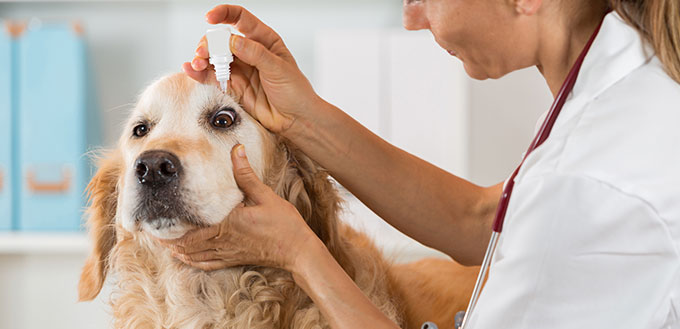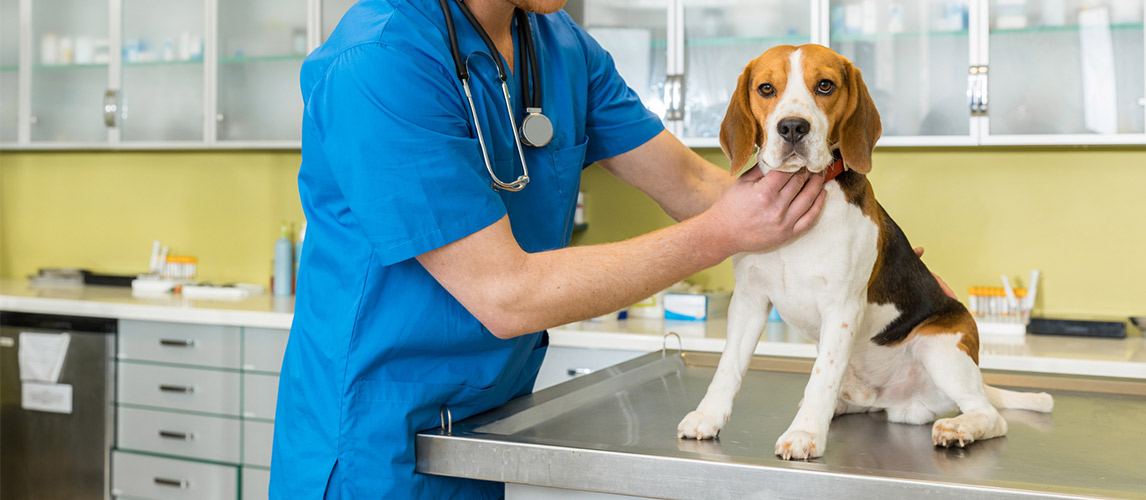‘My dog’s eye is red’ is one of the common complaints that pet parents all over the world have taken to the vet. Puppy red eyes are quite common, and the same can be said for older dogs. The good news is that the reddish eye does not always mean that your canine friend is experiencing a serious health issue as a dog’s eye is as sensitive as that of humans. This write-up is poised to X-ray the causes of red eye in dogs as well as the possible treatment both at home and by a professional.

Causes of Bloodshot Eyes in Dog’s
More often than not, canine red eye may be a result of allergies, irritation, injuries, and many more, but on some occasions, it may come from serious eye defects that might call for surgery to correct. Here are some possible causes;
- Trauma: Trauma is among the most widespread causes of red eyes in canines. Your dog’s eyes may have come into contact with a foreign object like a branch poking the eye. The eye may be unharmed, but the tissues surrounding it might become inflamed.
- Environmental irritants or allergen: This may come in the form of dirt, smoke from cigarettes, pollen, fiber, weeds, and dust. All these can leave your dog with periocular irritation.
- Bacterial conjunctivitis: Relatively, bacterial conjunctivitis is not as common as the primary or major cause of canine conjunctivitis. It usually plays a secondary role when a dog’s eyes are already red and swollen from a completely different condition, such as viral conjunctivitis or dry eye.
- Viral conjunctivitis: This condition is common among household pets that suffer from canine distemper, feline immunodeficiency virus (FIV), feline herpesvirus, feline leukemiavirus (FeLV).
- Corneal disease: Any irritant to a pup’s cornea can lead to redness, inflammation, and periocular swelling.
- Skin diseases: Skin diseases like painful cancers or Mange mite infestation that occur around a canine’s eyes might lead to itching and engender rubbing and inflammation of the eye.
- Entropion: This condition makes the eyelids of a dog to turn inward, making both the eyelid and eyelashes to be in constant contact with the pup’s eye surface.
- Cherry eye: This is an inflammation of a gland within the dog’s 3rd eye eyelid. The gland protrudes from the back of the eyelid, appearing in the form of a red bump that pokes out from the underside of the eye.
- Hyphema: Any form of injury to a pup’s eye will result in a pool of blood in the front of the eyeball.
- Dry eye: Also known as Keratoconjunctivitis sicca, the condition comes when a dog’s eyes fail to produce sufficient tear film. As a result, the cornea will become dry and swollen without the required tear to maintain its moistness and keep it free from infectious agents. This comes with pain and makes the dog’s eye to appear reddish.
- Corneal ulcer: This is usually a result of infection, and comes in the form of an open sore or wound located on the outer part of the pup’s cornea.
- Glaucoma: This condition increases the pressure within a canine’s eyes.
- Uveitis: Usually, this condition can be caused by infection, injury, or cancer, and comes in the form of an inflammation of the ciliary body or iris.
- Blepharitis: The eyelids can become swollen from this condition and is caused by irritation, infection, or even allergies.
- Tumor: Tumors may either be malignant or benign. It is a mass growth within or behind the eye.
You may also like our guide on Dog Tear Stain Remover.
How to Prevent Bloodshot Eye’s in Dogs
Your best bet is to seek professional help when you observe redness in your pet dog’s eye. However, you can still take some steps to keep the dog comfortable in the interim.
- Prevent scratching and pawing: This can be achieved by covering the dog’s paws with stockings, or you can get a soft E-collar.
- Keep the affected area clean: If the eyes are emitting excess discharge, it can be wiped with a tissue and warm water; however, you should avoid touching the eye surface. Also, a damp cloth with a cool compress will suffice for soothing the sore eyes. Avoid using medication for a dog’s eyes except when directed by a specialist.
- Monitor symptoms: Monitor the dog for unusual symptoms, like poor appetite, fever, and lethargy – these are indications that a vet’s attention is highly needed.

Treatment for Red Eye in dogs
The best thing to do when a dog has bloodshot eyes is to call on the vet who will recommend any of the under-listed;
- Ophthalmologic exam: The vet uses an ophthalmoscope to check the dog’s eye. The specialist may decide to track the pup’s vision by moving an object around for the dog’s eye to follow.
- Schirmer tear test: This test will show whether your dog’s eyes are getting adequate lubrication.
- Internal eye pressure test: This is accomplished with a tool known as a tonometer.
- Fluorescein stain test: Here, the vet applies a safe dye to the dog’s eye, to view otherwise-invisible corneal injuries or scratches.
- Blood tests: Blood screening may be required to get to the root of fundamental medical issues that can give rise to redness of the eye.
- Topical Medications: You can get this in the form of drops and ointments, and you may need to apply it three times per day for a period of one or two weeks until all symptoms resolve. Medications here may include; steroids, antibiotics, dilators, pain relievers, and even artificial tears.
- Oral Medications: Your pet’s prescription might include some oral antibiotics in cases of trauma or infections. The situation may also call for the administration of anti-inflammatories.
- Surgery: This might be the last resort for the treatment of serious conditions that cannot be addressed with medications. For instance, the initial case of cherry eye can be treated through manual resetting, but any re-occurrence calls for surgery to effect a lasting repair to the damaged tissue. Another eye defect that may require surgery is entropion; this way, the eyelid will be reformed, so it does not continue rubbing on the dog’s cornea. In rare cases, red eye may be a resultant effect of an untreatable condition – this is an indication for enucleation surgery to completely remove the affected eye.
More Pet Product Reviews
Flea Collars For Dogs
Flea Treatments For Dogs
Dog Joint Supplements
Dog DNA Tests
Fish Oil For Dogs
Coconut Oil For Dogs
Probiotics For Dogs
CBD Oil For Dogs
Dog Dewormers
Dog Flea Combs
Sources:
- Beth Mueller, Don’t Overlook Dry Eye in Dogs, College of Veterinary Medicine
- Gionfriddo, J. R., A Challenging Case: A Dog With A Painful Red Eye, CAB International
- Cataracts in Dogs: Causes, Diagnosis and Treatment, Best Friends Animal Society
-
Examining and Medicating the Eyes of a Dog, Washington State Univeristy
Note: The advice provided in this post is intended for informational purposes and does not constitute medical advice regarding pets. For an accurate diagnosis of your pet's condition, please make an appointment with your vet.







